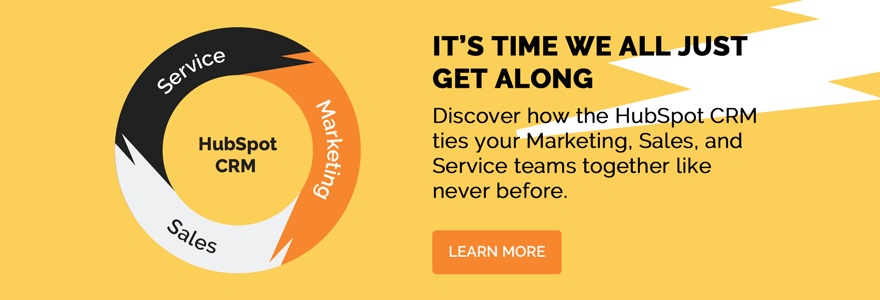Mastering SEO in 2025: The Updated Guide to Ranking and Driving Traffic
Introduction: SEO’s Evolution into 2025
SEO in 2025 is a whole new ballgame. Long gone are the days when stuffing keywords and tossing in a few backlinks did the trick. Now, AI-driven algorithms and Core Web Vitals metrics practically have Google judging your website like a harshly critical dance coach. You’ll need to keep up, especially with zero-click searches making it harder than ever to get those clicks.
But don’t worry—we’ve got the playbook to help you stay ahead. From AI-powered content strategies to voice search optimization, this guide has everything you need to thrive in today’s SEO world.
Key Takeaways
AI & Machine Learning in SEO:
Core Web Vitals Matter:
Optimize for Mobile & Voice Search:
E-E-A-T for Authority:
Local SEO for “Near Me” Searches:
Adapt to Zero-Click Searches:
AI and Machine Learning in SEO
In 2025, AI is the powerhouse behind Google’s ranking algorithms. With tools like Google’s RankBrain and the newer MUM (Multitask Unified Model) in play, search engines analyze content with laser focus, going beyond simple keyword matching to grasp user intent, context, and emotions. It’s like Google is reading users’ minds—and as an SEO strategist, that’s both a game-changer and a new challenge.
How AI is Shaping SEO in 2025
- User intent at the core: Google’s algorithms are now so sophisticated that they understand intent, not just keywords. For example, if a user searches for “how to optimize my website speed,” AI can distinguish whether they’re looking for tools, DIY tips, or hiring options and tailor results accordingly. RankBrain and MUM are trained to recognize these nuances.
- Content relevance and structure: AI favors content that’s well-organized and comprehensive. The days of keyword-stuffed fluff are over; instead, focus on structuring your content with clear headings, bulleted lists, and FAQs to make it easily digestible. By giving users the exact answers they’re looking for, you improve the chances of snagging a featured snippet or ranking higher on the page.
- Personalized search: Thanks to AI, Google is now tailoring search results more personally. For instance, someone in Toronto searching for a “local marketing agency” will see results optimized for their location and preferences, influenced by AI’s ability to filter based on previous interactions and known interests.
Read How to Get More Website Leads for more actionable tips.
Tools to Boost Your AI-Driven SEO Strategy
To master SEO in 2025, align your content with AI’s expectations. Here are some recommended tools:
- Jasper: Known for generating content ideas and refining copy with SEO in mind, Jasper can help you tailor content to resonate with the keywords that drive results.
- Surfer SEO: Surfer analyzes top-ranking pages and shows how to align with those same keywords, structure, and readability to help you get noticed.
- SEMRush: SEMRush’s advanced AI tools for keyword research, competitive analysis, and content optimization offer robust support in building a data-driven SEO strategy.
User Experience and Core Web Vitals: The New Ranking Drivers
In 2025, user experience (UX) isn’t just a nice-to-have—it’s a make-or-break ranking factor. Google’s Core Web Vitals, a set of UX-focused metrics, now have a major influence on where your website lands in search results. This means that page speed, interactivity, and visual stability aren’t just technical details—they’re your golden ticket to top rankings.
What Are Core Web Vitals?
Core Web Vitals focus on three main metrics:
- Largest Contentful Paint (LCP): Measures loading performance. To provide a good user experience, aim for an LCP of 2.5 seconds or faster.
- First Input Delay (FID): This metric has been largely replaced by Interaction to Next Paint (INP), with a target score of 200 milliseconds or less.
- Cumulative Layout Shift (CLS): Measures visual stability, looking at how much the layout shifts as the page loads. Aim for a CLS score of less than 0.1 to prevent jarring jumps and maintain a stable page.
Actionable Steps to Improve Core Web Vitals
- Optimize images: Compress images, use modern formats like WebP, and set up lazy loading to improve loading times and LCP scores.
- Minimize JavaScript: Excess JavaScript can delay loading and responsiveness. Reducing it or deferring non-critical scripts can improve both LCP and FID.
- Implement stable elements: Reserve space for ads, images, and videos to keep them from shifting on load, reducing CLS.
Try ThinkFuel’s Website Grader to see how your website stacks up.
Mobile-First and Voice Search Optimization
With mobile devices now the primary means of internet access, Google’s shift to mobile-first indexing is no surprise. In 2025, if your website isn’t optimized for mobile, it’s likely missing out on valuable visibility. But mobile isn’t the only shift—voice search optimization is also critical as more users rely on voice assistants like Siri, Alexa, and Google Assistant to find information.
Mobile-First Best Practices
- Use responsive design: Ensure your site looks great and functions well on screens of all sizes.
- Optimize loading speeds: Mobile users are less patient with slow load times, so aim for a load time of three seconds or less.
- Design for touch: Make sure buttons are easy to tap, avoiding elements that are too close together.
Voice Search Optimization Tips
Since voice queries are typically longer and more conversational than typed searches, optimizing for voice requires a few specific adjustments:
- Incorporate natural language: Write content that reflects how people speak, using phrases and questions they might say aloud.
- Answer common questions: Structured content like FAQs can directly address the “who, what, where, when, why” questions voice searchers often ask.
- Use local keywords: Many voice searches are location-based (“near me” searches), so include relevant local keywords where possible.
Read SEO Basics – 7 Things You Need to Rank Better for more insights.
Content Strategy in 2025: E-E-A-T Guidelines
In 2025, creating content that ranks isn’t just about filling a page with keywords; it’s about building authority, trust, and expertise. Google’s E-E-A-T guidelines, which stand for Experience, Expertise, Authoritativeness, and Trustworthiness, are now key to getting search engines to see your content as credible. Following Google's E-E-A-T can improve your chances of ranking, especially for competitive keywords and topics.
Breaking Down E-E-A-T
- Experience: Google values content from creators who have real, first-hand experience with the subject. Case studies, personal insights, and specific examples can demonstrate experience.
- Expertise: Content should be crafted by someone knowledgeable in the field. In some industries—like health, finance, and law—Google favors information from proven experts.
- Authoritativeness: Building authority involves creating high-quality content that earns links, mentions, and citations from other reputable sources. The more reputable sources referencing your content, the higher its authority.
- Trustworthiness: Trust signals are critical to both users and search engines. Securing your site with HTTPS, citing credible sources, and showcasing positive reviews or testimonials can improve your trustworthiness score.
Actionable Tips for E-E-A-T Compliance
- Publish expert-authored content: Feature articles, case studies, and insights from recognized professionals in your industry.
- Add credentials and author bios: Adding author bios and credentials lends credibility to your content and helps visitors trust the information.
- Showcase user reviews and testimonials: Highlight your site's customer reviews, industry awards, and media mentions to boost trust signals.
- Leverage earned media: Earned media—like press mentions, guest articles, and backlinks from authoritative sites—demonstrates trustworthiness and brand authority to both users and search engines.
Optimizing for Featured Snippets and Zero-Click Searches
Featured snippets—those answer boxes at the top of Google’s search results—are a prime target for SEO in 2025. As more users get answers directly from search results, zero-click searches have grown, where people find what they need without ever visiting a website. This trend might seem like a hurdle for traffic, but with a strategic approach, it can actually boost your brand visibility and authority.
Types of Featured Snippets to Target
- Paragraph snippets: Google displays a short paragraph to answer direct questions. Craft concise answers to common questions related to your content.
- List snippets: Google loves lists for step-by-step instructions or tips. Use numbered or bulleted lists to outline processes or steps in your content.
- Table snippets: For data-focused content, tables work well to present organized information. Adding a table to a product comparison or price breakdown could help you secure this spot.
Tips to Win Featured Snippets
- Use clear, descriptive headings: Structure content with specific headers and answer direct questions (e.g., “How to Improve Core Web Vitals”).
- Answer common questions directly: Include FAQs or a “People Also Ask” section with concise, direct answers to user queries.
- Focus on concise summaries: Keep responses to common questions between 40 and 60 words to match snippet requirements.
SEO Metrics to Track in 2025
Tracking the right metrics is essential to staying competitive. With new technologies and shifting user behaviors, monitoring performance helps you understand what’s working and where to fine-tune. In 2025, key metrics go beyond basic traffic numbers, focusing on user experience and engagement indicators.
Key Metrics for SEO Success
- Organic traffic: Still a core metric, organic traffic shows how many visitors reach your site through unpaid search results. Monitor it alongside engagement metrics for a full view of your SEO performance.
- Bounce rate and dwell time: These metrics show how well your content matches user intent. A high bounce rate or low dwell time suggests visitors aren’t finding what they’re looking for, signaling that it’s time to adjust content.
- Core Web Vitals scores: Google’s Core Web Vitals (LCP, FID, and CLS) indicate user experience, which directly impacts rankings. Review these scores regularly to maintain a strong UX.
- Keyword rankings: Tracking the rankings for target keywords helps you see which strategies are moving the needle. Focus on ranking position shifts and analyze user intent or competitor performance changes.
Tools to Track SEO Metrics
- Google Analytics: A staple for analyzing organic traffic, user behavior, and conversion paths, Google Analytics provides a broad look at how users interact with your site.
- Google Search Console: Essential for monitoring keyword rankings, click-through rates, and Core Web Vitals scores, Google Search Console offers insights into your visibility on Google.
Local SEO and “Near Me” Searches
In 2025, local SEO is more important than ever. With the growth in mobile usage and the rise of “near me” searches, businesses that want to capture local customers need to ensure they’re optimized for regional visibility. For mobile-first SEO strategies, local optimization can distinguish between appearing in nearby searches and being overlooked.
Key Strategies for Local SEO Success
- Optimize your Google Business Profile (GBP): Your GBP is the foundation of your local SEO. Complete your profile with accurate contact information, hours, images, and categories to increase your chances of appearing in local search results.
- Use location-based keywords: Include specific geographic keywords in your content, titles, and meta descriptions to capture local traffic. For instance, a keyword like “SEO agency in Toronto” can target potential clients in that area.
- Encourage customer reviews: Positive reviews on your GBP not only boost trustworthiness but also improve rankings in “near me” searches. Responding to reviews also shows potential customers that you’re engaged and responsive.
- Build local backlinks: Seek links from reputable local sites, such as local directories, community blogs, or partner businesses, to strengthen your site’s local authority and improve your visibility in regional search results.
Capturing “Near Me” Searches
Many users now search on the go, often including “near me” in their queries. To increase your chances of appearing in these searches:
- Use local schema markup: Adding schema markup to your website can give Google-specific information about your business, like your location and operating hours.
- Embed a Google Map on your site: For added visibility, include a map of your location on your contact page or homepage.
SEO Challenges and Algorithm Changes to Watch in 2025
SEO in 2025 brings its share of challenges, from real-time updates to Core Web Vitals to increased competition for zero-click searches. As search engines evolve, so must your approach. Staying ahead of these algorithm changes is essential to maintaining your rankings and adapting to shifting priorities.
Major Challenges in 2025
- Real-time updates to Core Web Vitals: Google now frequently updates its Core Web Vitals requirements, meaning your page speed, interactivity, and visual stability scores need constant attention. Falling behind on these metrics could impact your rankings, especially with Google placing UX at the center of its SEO criteria.
- Rise of zero-click searches: With more users finding answers directly in search results through featured snippets, knowledge panels, and answer boxes, fewer are clicking through to websites. This requires SEO strategies that focus on capturing visibility within Google’s SERPs while also encouraging clicks.
- Privacy changes and first-party data: As privacy regulations become stricter, tracking user behavior with third-party cookies is now more limited. First-party data collection—through email signups, user accounts, and other direct interactions—is key to building a data-rich SEO strategy in 2025.
Adapting to Algorithm Changes
To stay ahead of algorithm changes:
- Conduct regular SEO audits: Assess your site’s performance against the latest SEO requirements, including Core Web Vitals and mobile-first SEO strategies, to pinpoint areas for improvement.
- Use structured data: Schema markup helps your content stand out in search results and improves your chances of appearing in rich snippets, a valuable counter to zero-click searches.
Internal Linking and Topic Clusters
In 2025, effective internal linking and topic clusters are essential to SEO success. Search engines reward sites that organize content around related themes, helping users find what they need quickly. By creating pillar pages supported by clusters of related articles, you can strengthen your rankings and keep visitors engaged on your site longer.
Building Topic Clusters for Better Rankings
- Create pillar pages: Pillar pages cover a broad topic in depth and link out to related articles. For example, a pillar page on “SEO in 2025” might link to detailed articles on AI in SEO, mobile-first SEO strategies, Core Web Vitals SEO, and voice search optimization.
- Develop supporting content: Each related article in the cluster should link back to the pillar page and cover a specific subtopic in more detail, adding depth and value for readers.
- Link relevant pages within clusters: Include internal links between articles within the same topic cluster. This helps search engines understand the relationships between your content and enhances the user experience.
Benefits of Internal Linking
- Improves crawlability: Effective internal linking helps search engines discover and index new pages faster.
- Increases time on site: Clear paths between related content encourage users to explore multiple pages on your site, reducing bounce rates and boosting engagement metrics.
Winning with SEO in 2025: Partner with ThinkFuel
SEO in 2025 demands a strategic approach that blends cutting-edge technology with user-focused content. From AI-powered insights and Core Web Vitals optimization to mastering mobile-first SEO and voice search, success hinges on staying current with evolving trends and algorithms.
ThinkFuel is here to help you navigate these changes and position your business for growth. With our expertise in SEO, we’ll craft a tailored strategy that drives rankings, boosts visibility, and brings in quality traffic. Ready to elevate your SEO game? Let’s connect and start optimizing for your future. Contact us today!
Table of contents
Share this
You May Also Like
These Related Stories

SERP ranking improvement! The Power of Topic Clusters and Backlink Magic

Your Guide to Local SEO

